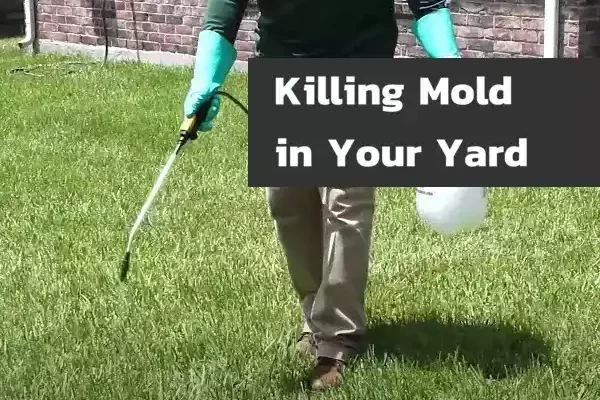Mold in your yard can be a troublesome issue, detracting from your garden’s aesthetic appeal and potentially causing health issues. To maintain a healthy and attractive outdoor space, it’s crucial to address mold promptly and effectively. The following are actionable steps to kill and prevent mold in your yard, ensuring a lush and vibrant landscape.
Identify the Mold
Before taking any remedial action, it’s important to identify the type of mold you’re dealing with. Mold typically appears as white, black, or green patches on plants, mulch, or lawn. Some common types include slime mold, which may look like vomit, and powdery mildew, which has a white, powdery appearance.
Remove Mold Sources
- Remove garden debris: Clear away fallen leaves, dead plants, and other organic matter that may harbor mold spores.
- Improve soil drainage: Waterlogged soil is a breeding ground for mold. Ensure adequate drainage by amending the soil with compost or installing a French drain if necessary.
Change Watering Habits
- Water in the morning: This allows the sun to dry the water throughout the day, reducing moisture on plant surfaces.
- Use an irrigation system: Sprinklers or a drip irrigation system can target plant roots directly, minimizing excess moisture on foliage.
Trim and Prune Regularly
- Trim grass and plants: Regularly mow your lawn and trim shrubs to improve air circulation and reduce mold growth.
- Prune branches: By pruning dense branches, you can increase sunlight penetration and airflow, which helps to keep mold at bay.
Use Antifungal Treatments
- Apply fungicidal sprays: Fungicides can be effective at treating and preventing mold. Always follow the manufacturer’s instructions when applying.
- Consider natural remedies: Solutions like baking soda, vinegar, or neem oil can act as natural fungicides. Mix with water and spray over the affected areas.
Maintain Healthy Soil
- Balance soil pH: Mold thrives in acidic conditions. Test your soil’s pH and adjust it if necessary using lime to raise pH or sulfur to lower pH.
- Fertilize appropriately: Use the proper fertilizer for your plants and avoid over-fertilizing, which can promote mold growth.
Implement Good Garden Practices
- Rotate crops: Planting different types of plants in an area each year can prevent mold spores from becoming established.
- Space plants properly: Adequate space between plants ensures proper air circulation, reducing the risk of mold.
Monitor and Repeat
Continually monitor your yard for signs of mold, and apply treatments as needed. Prevention is key, so maintain good gardening practices throughout the season.
By following these steps, you can effectively kill mold in your yard and create a more pleasant outdoor environment. It’s essential to be proactive in garden maintenance to prevent mold from taking hold in the future. If mold persists or if it’s affecting a large area, consider consulting with a professional for more targeted advice.

